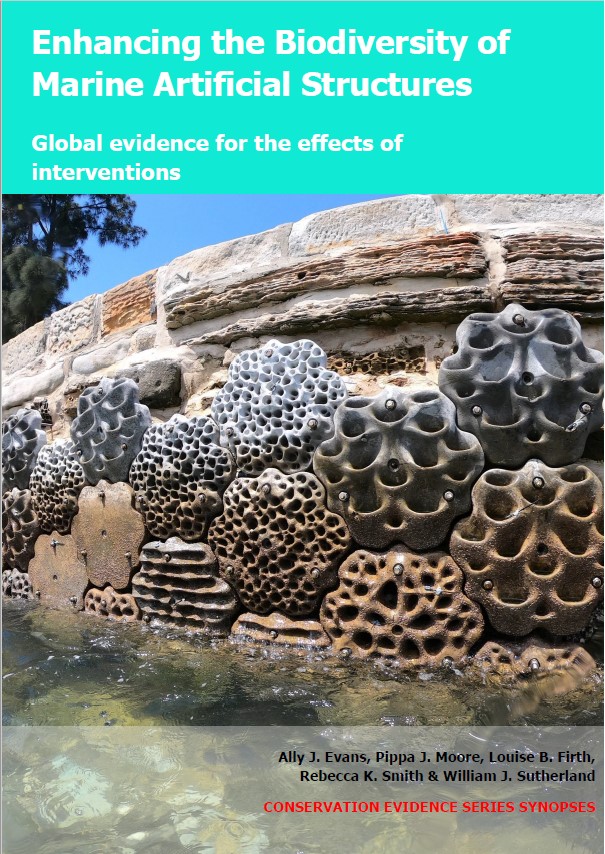Create large protrusions (>50 mm) on intertidal artificial structures
-
Overall effectiveness category Awaiting assessment
-
Number of studies: 2
View assessment score
Hide assessment score
How is the evidence assessed?
-
Effectiveness
not assessed -
Certainty
not assessed -
Harms
not assessed
Study locations
Supporting evidence from individual studies
A replicated, controlled study in 2015–2017 on an intertidal seawall on open coastline in the UK (MacArthur et al. 2020) found that boulders positioned with large protrusions on their upper surfaces, along with large ridges, supported similar macroalgae and invertebrate species richness and barnacle Semibalanus balanoides abundance, but higher limpet Patella vulgata abundance, than boulders positioned randomly. Boulders positioned with large protrusions and ridges on their upper surfaces supported similar macroalgae and invertebrate species richness (4 species/boulder) and barnacle abundance (data not reported) but more limpets (82 limpets/boulder) than boulders positioned randomly (4 species/boulder, 27 limpets/boulder). It is not clear whether these effects were the direct result of creating large protrusions or ridges. Ten granite boulders (width: 2 m) were intentionally positioned with naturally-occurring large protrusions and/or ridges on their upper surfaces (average 4/boulder) and ten were positioned randomly (1/boulder) at mid-highshore in a granite boulder seawall during construction in 2015–2017. Protrusions/ridges were 100–800 mm high (other dimensions/spacing not reported). Macroalgae and invertebrates on the upper surfaces of boulders were counted during low tide in June 2017.
Study and other actions testedA replicated, randomized, controlled study in 2014–2016 on an intertidal seawall in a marina in the Coral Sea, Australia (Waltham & Sheaves 2018) reported that large protrusions created on the seawall supported similar macroalgae and invertebrate species richness to seawall surfaces without protrusions, but that tilted protrusions with shaded surfaces supported different community composition to horizontal ones. Over 24 months, a total of nine macroalgae and invertebrate species groups were recorded on landward-tilted protrusions, eight on seaward-tilted protrusions, eight on horizontal protrusions, and 10 on seawall surfaces without protrusions (data not statistically tested). Community composition was similar on landward- and seaward-tilted protrusions, but both differed to horizontal protrusions (data reported as statistical model results). Four species (3 mobile invertebrates, 1 non-mobile invertebrate) recorded on protrusions were absent from seawall surfaces without. Large protrusions were created by attaching concrete troughs to a boulder seawall in June 2014. Troughs contained rock pools but outside surfaces were surveyed separately and constituted protrusions lacking a top surface. Rectangular protrusions (length: 400 mm; width: 250 mm; height: 350 mm) were either horizontal or tilted 45° towards the land or sea. Underhanging surfaces of tilted protrusions were shaded. There were three of each randomly arranged at midshore along the seawall. Macroalgae and invertebrates were counted on protrusions and seawall surfaces (number/dimensions not reported) during low tide over 24 months. One horizontal protrusion was missing and no longer provided habitat.
Study and other actions tested
Where has this evidence come from?
List of journals searched by synopsis
All the journals searched for all synopses
This Action forms part of the Action Synopsis:
Biodiversity of Marine Artificial Structures
Biodiversity of Marine Artificial Structures - Published 2021
Enhancing biodiversity of marine artificial structures synopsis





)_2023.JPG)














